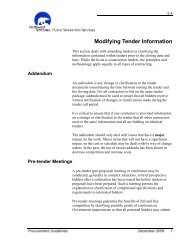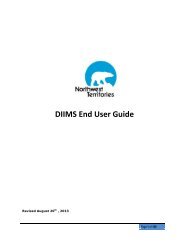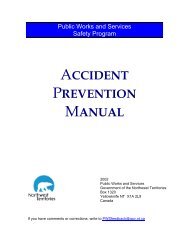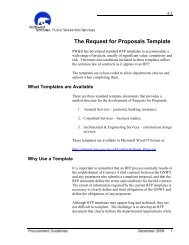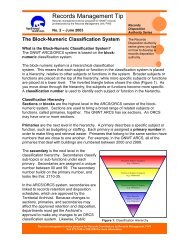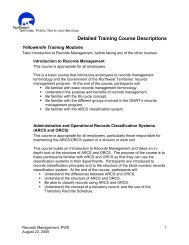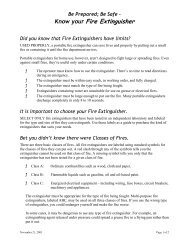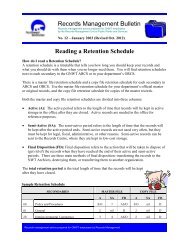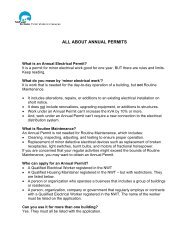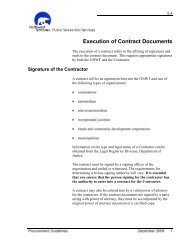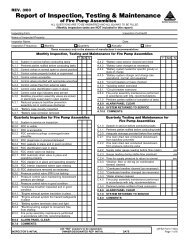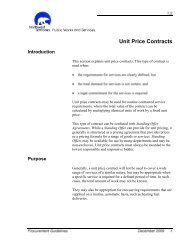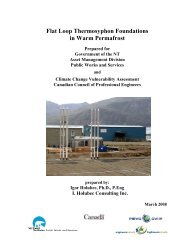Good Engineering Practice for Northern Water and Sewer Systems
Good Engineering Practice for Northern Water and Sewer Systems
Good Engineering Practice for Northern Water and Sewer Systems
Create successful ePaper yourself
Turn your PDF publications into a flip-book with our unique Google optimized e-Paper software.
All of these pipes per<strong>for</strong>med reasonably well in the areas they were installed. Major problems have<br />
been corrosion of CMP used <strong>for</strong> sewer mains in Yellowknife (approximately 30-year life span) <strong>and</strong><br />
ovalling failure of thin-walled HDPE in older sewer systems.<br />
Currently only seven main types of pipe are in use in the North. See Table 2.1 below.<br />
Table 2.1: Pipe Materials in Use in Canada’s North<br />
Pipe Material<br />
<strong>Water</strong><br />
Main<br />
Sanitary<br />
<strong>Sewer</strong><br />
Storm<br />
<strong>Sewer</strong><br />
<strong>Sewer</strong><br />
Service<br />
<strong>Water</strong><br />
Service<br />
High Density Polyethylene (HDPE) <br />
Polyvinyl Chloride (PVC) <br />
Cement-Lined Ductile Iron (DI) <br />
Copper<br />
<br />
Cement-Lined Welded Steel <br />
Kitec<br />
<br />
Corrugated Metal Pipe (CMP)<br />
<br />
2.3 ABOVE OR BELOW GRADE INSTALLATION<br />
The trend, since the late 1970s, has been to utilize buried pipes wherever possible. To this end,<br />
only two communities (Inuvik <strong>and</strong> Norman Wells) construct new above grade systems (utilidors).<br />
Norman Wells does, where possible <strong>and</strong> practical, utilize buried utilities. Inuvik’s soil conditions<br />
preclude buried pipes, except <strong>for</strong> isolated areas.<br />
Recommendation<br />
2.3.1 Buried Pipes<br />
Buried pipes are the recommended<br />
alternative, where possible.<br />
Rationale<br />
Buried pipes are not subject to extremes of ambient<br />
temperature, do not disrupt lots <strong>and</strong> roadways <strong>and</strong><br />
are not subject to v<strong>and</strong>alism. Figure 2.1 is a typical<br />
“trumpet curve” illustrating how temperature<br />
extremes reduce with depth below ground surface.<br />
GOOD ENGINEERING PRACTICE 2-3 Apr-04<br />
Piping



